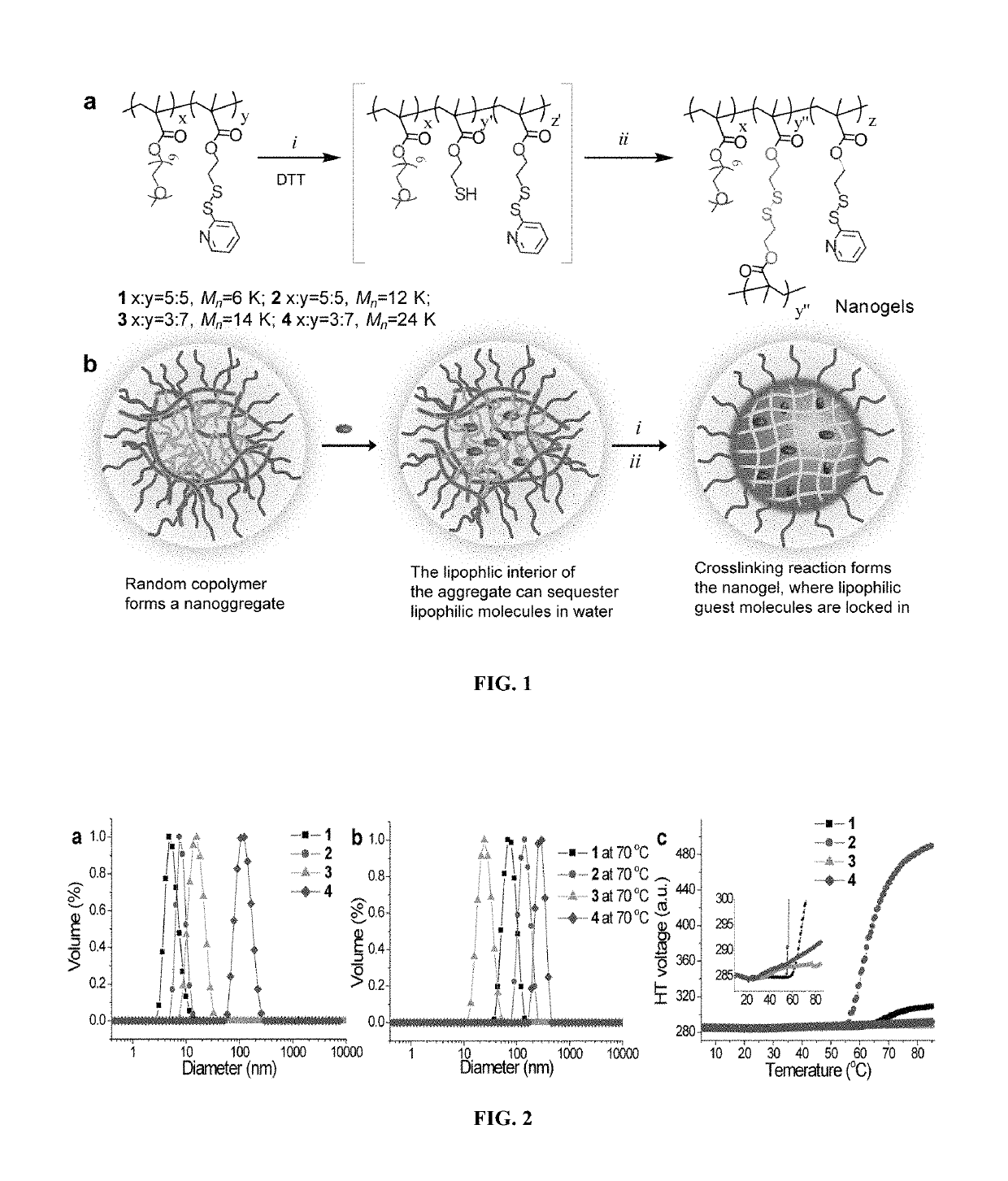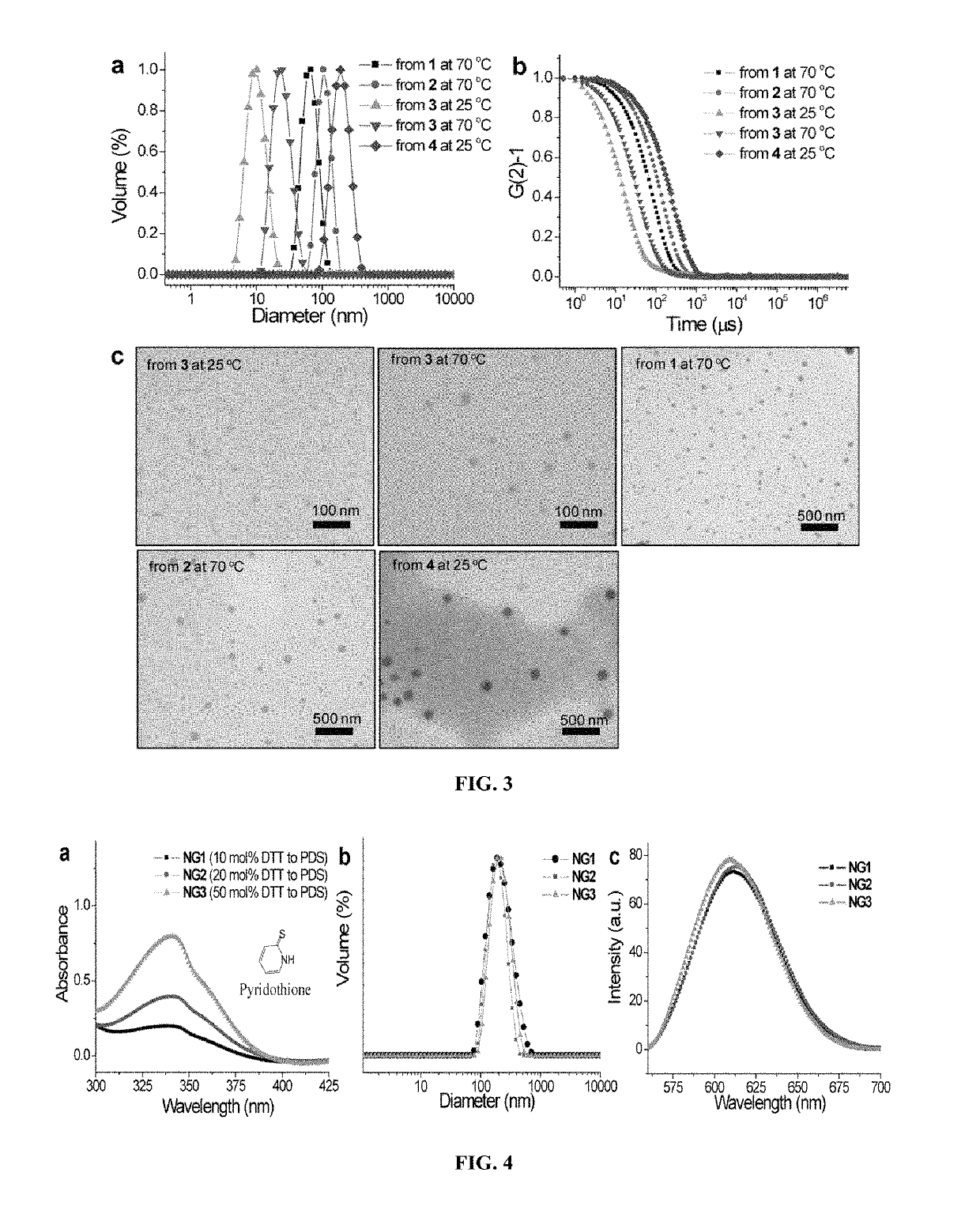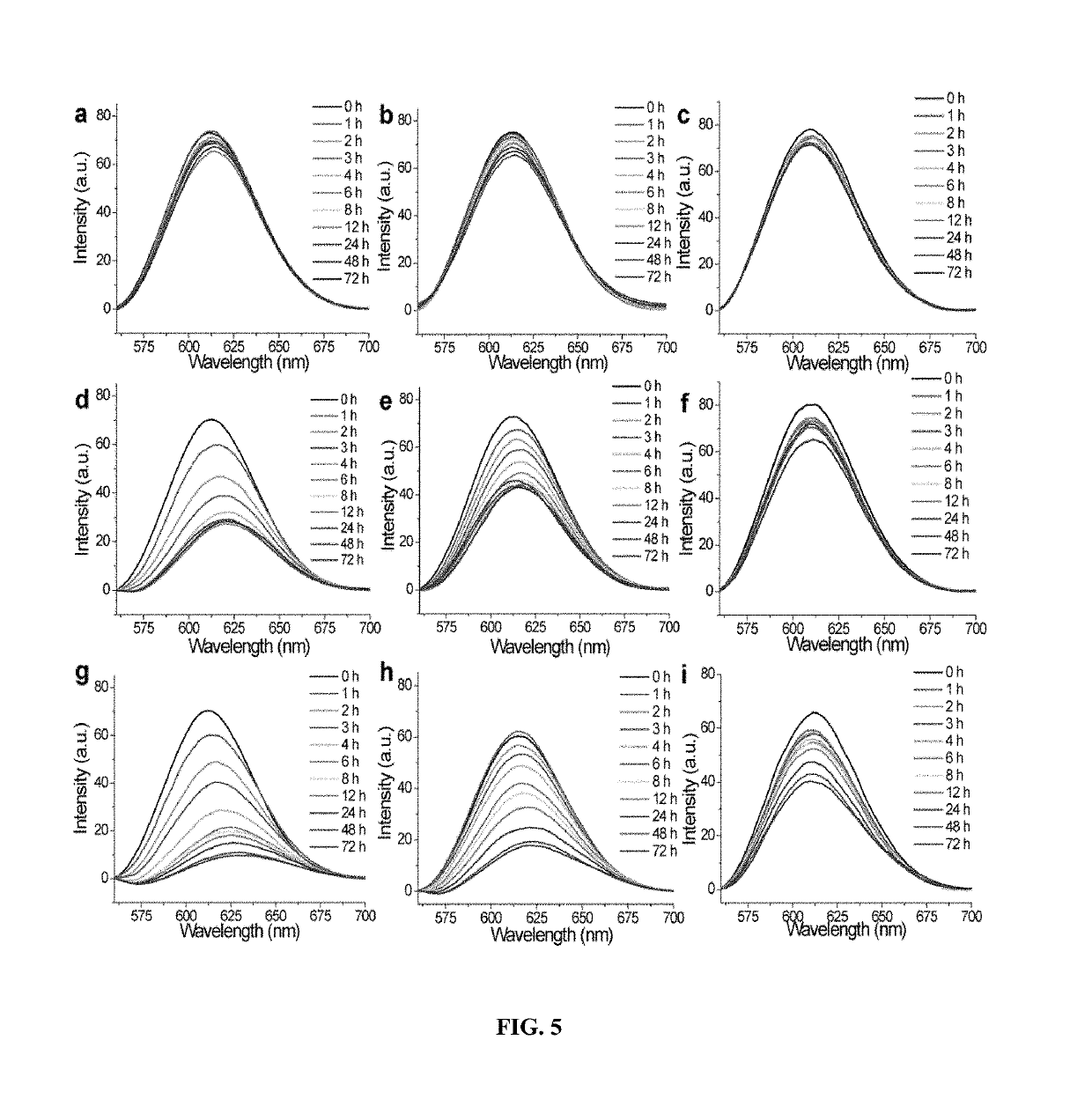Crosslinked polymer nano-assemblies and uses thereof
a polymer nano-assembly and crosslinked technology, applied in the direction of drug compositions, microcapsules, aerosol delivery, etc., can solve the problems of inability to meet the needs of small molecule surfactants, the stability and versatility of encapsulation vehicles remain major difficulties, and the micellar assemblies formed from small molecule surfactants have inherent stability problems, etc., to achieve the effect of being convenient to us
- Summary
- Abstract
- Description
- Claims
- Application Information
AI Technical Summary
Benefits of technology
Problems solved by technology
Method used
Image
Examples
examples
Design, Syntheses, & the Size-control of the Nanogels
[0160]Illustrative examples of structures of the nanogel precursors, polymer nanogels and synthetic approach are shown in FIG. 1. The polymer nanogel precursor is based on a random copolymer that contains oligoethyleneglycol (OEG) units and pyridyldisulfide (PDS) groups as side chain functionalities. Polymers (1-4) were prepared by reversible addition fragmentation chain transfer (RAFT) polymerization. The OEG unit is used to introduce a charge-neutral hydrophilic functional group, which is known to endow biocompatibility. PDS's lipophilic functionality provides a supramolecular amphiphilic nano-assembly in the aqueous phase, which helps avoid the use of any additional surfactant molecules to generate the nanogel. The amphiphilic nature of the nano-assembly and lipophilic environment afforded by the PDS functionality also provides the opportunity for lipophilic guest molecules to be sequestered within these nano-assemblies prior t...
PUM
| Property | Measurement | Unit |
|---|---|---|
| pH | aaaaa | aaaaa |
| pH | aaaaa | aaaaa |
| Concentration | aaaaa | aaaaa |
Abstract
Description
Claims
Application Information
 Login to View More
Login to View More - R&D
- Intellectual Property
- Life Sciences
- Materials
- Tech Scout
- Unparalleled Data Quality
- Higher Quality Content
- 60% Fewer Hallucinations
Browse by: Latest US Patents, China's latest patents, Technical Efficacy Thesaurus, Application Domain, Technology Topic, Popular Technical Reports.
© 2025 PatSnap. All rights reserved.Legal|Privacy policy|Modern Slavery Act Transparency Statement|Sitemap|About US| Contact US: help@patsnap.com



